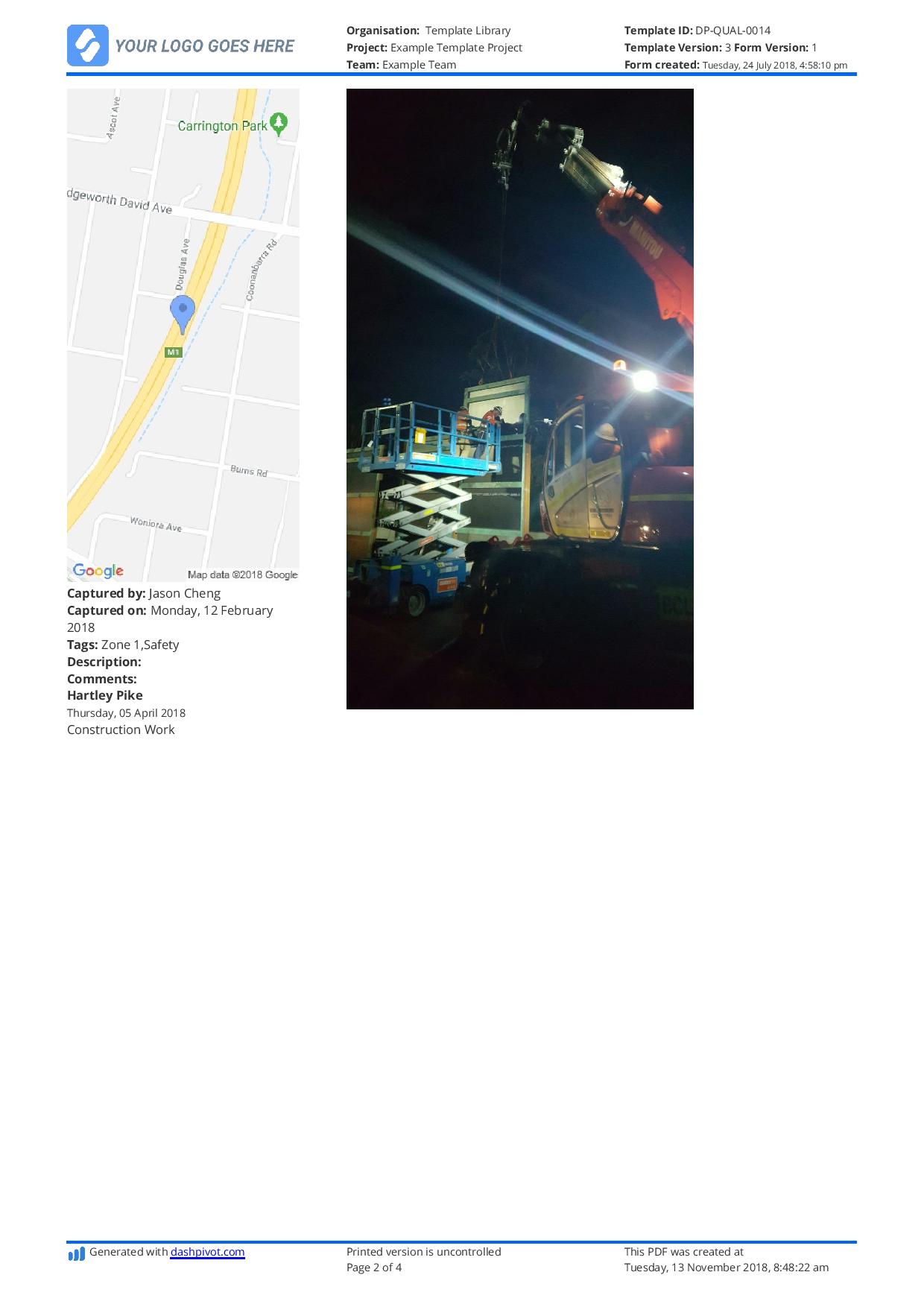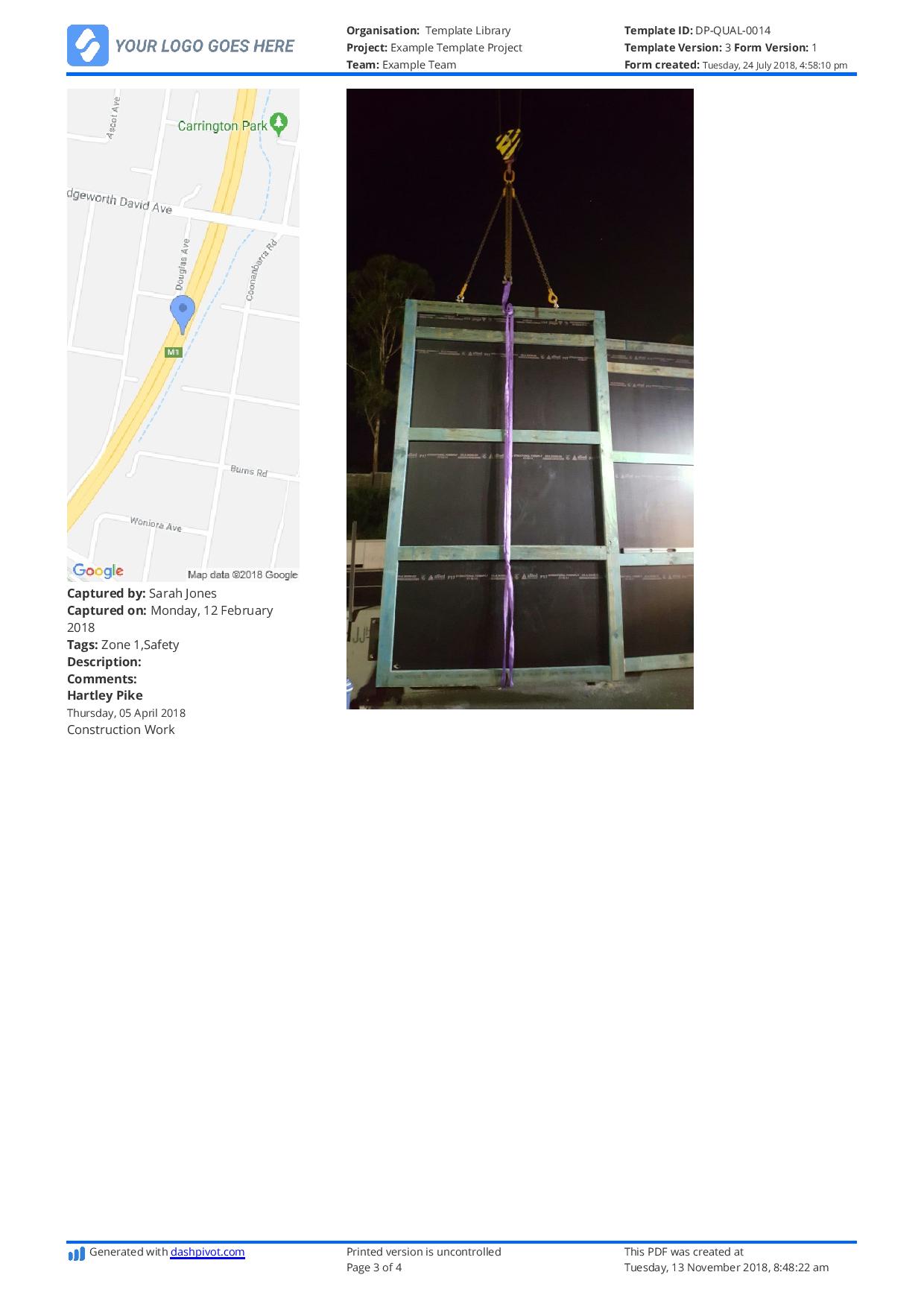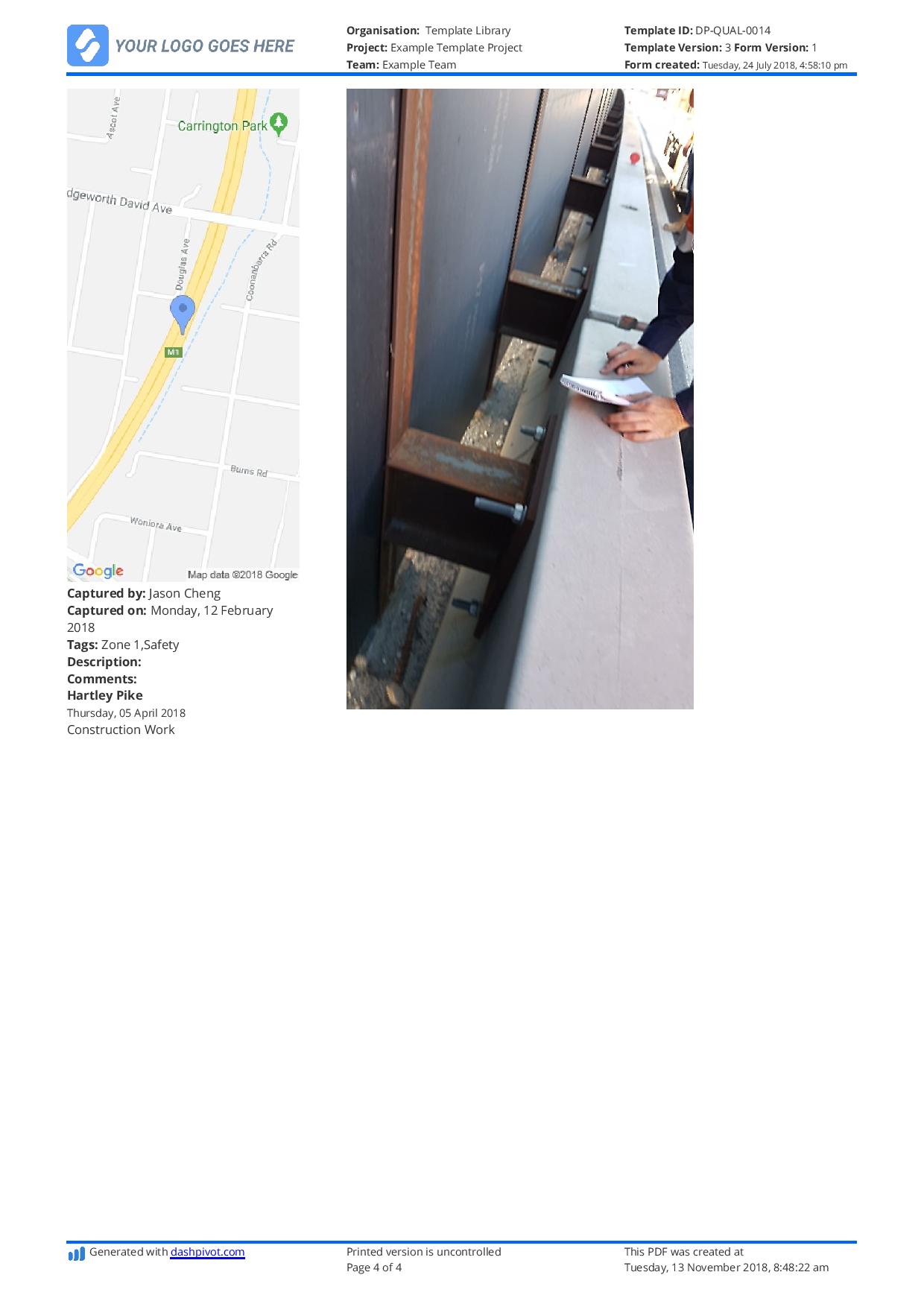Quality – What is a punch list

What is a punch list?
What is a punch list?
A punch list is a document, form or list of items or defects which defines the work which does not conform to contract specifications. A punch list is sent to the party responsible for rectifying these non-conformances and defects in order for their work to be deemed complete.
In simple words, a punch list is a list of defects uncovered or discovered during a project or specific phase of work which must be 'fixed' in order to for that party responsible for that work to be paid.
What are punch lists used for?
The above explanation or 'definition' partially explains what punch lists are used for, but there is more to this punch list story than meets the eye.
Punch lists are a means of formal and direct communication between two or more parties which lays out the actual and agreed to 'terms' of what needs to be fixed.
You can think of a punch list as being an unbiased intermediary between a contractor and subcontractor (or other parties). Without punch lists, parties would be reliant on word of mouth and verbal agreements or instructions - which would increase the chances of a third party intermediary needing to get involved in the form of legal issues or litigation.
This is an extremely important part of the purpose of a punch lists. Final compensation is often tied to these simple and powerful forms and the completion of works. The situation which everyone wants to avoid is when a contractor says that there are one or more defects which need to be fixed, but the subcontractor doesn't believe it is or was their fault or that it is their responsibility to front the time and resources to rectify the situation.
In this situation, parties go back and forth, before the situation needs to be escalated and managed or litigated by a third party or authority - who has little or no evidence to support either party anyway.
Good punch list etiquette and process and beneficial to all parties and improves transparency. Without a punch list - which comes attached with the supporting information, proof and collaboration necessary in project interactions - more and more projects and the communications between parties would inevitably break down.
When are punch lists used?
Punch lists can be used during any phase of construction or works - but they are typically used at the end of a company's phase of works or when a company is leaving the project. As you can imagine, there is little point to rectifying defects and other issues before the work is almost completed as it would then effect the project work moving forward and other defects and issues may occur from the movement of machinery, equipment etc.
A punch list is best 'served' when a lot or specific part of a project is being finished. This way, parties can do a comprehensive walk around and issue a punch list which a subcontractor can dedicate its resources to completing.
You can see the punch list example below for an idea of what they look like in action. This punch list example shows the incorrect installation of some roadside barriers.
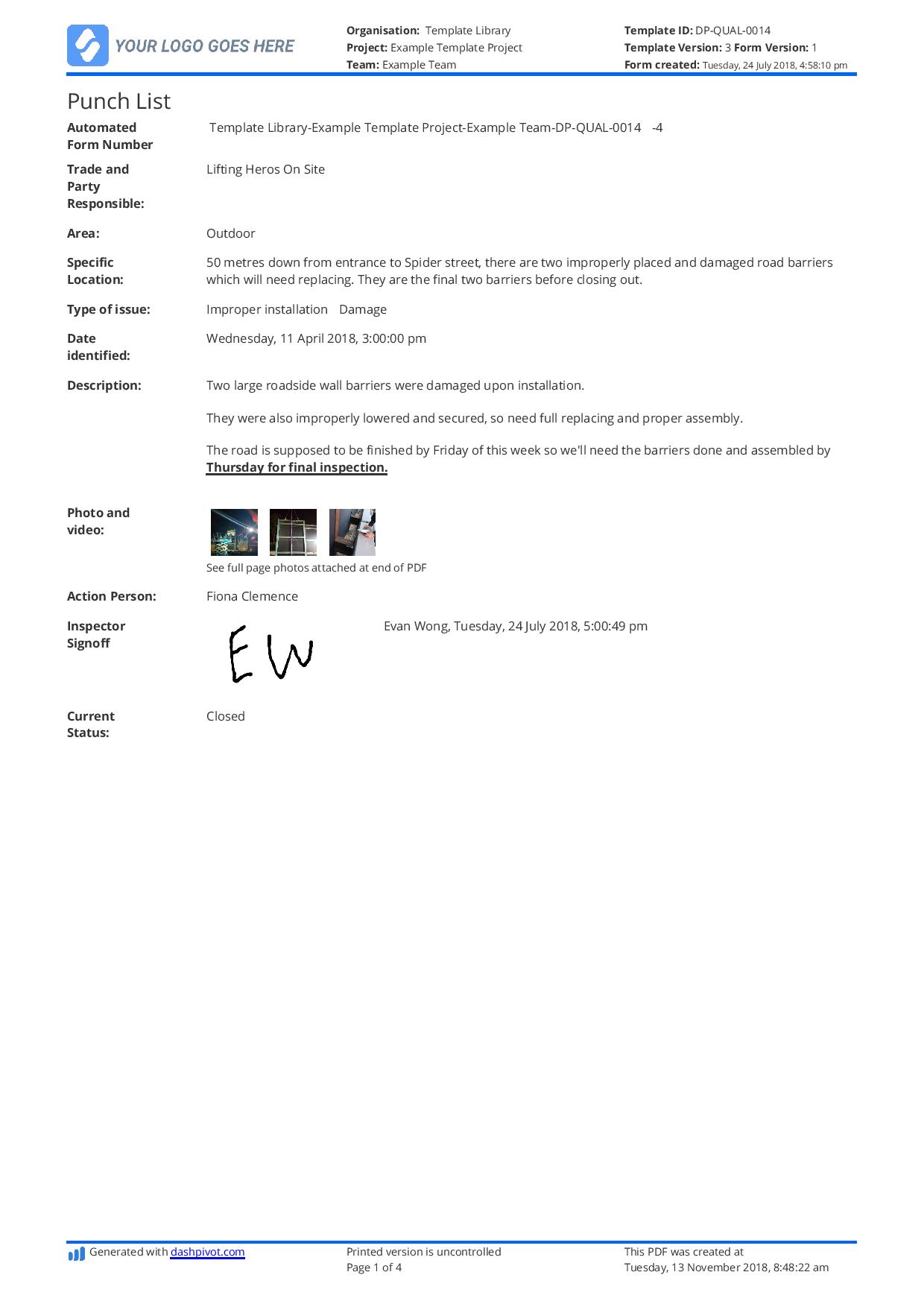
Use this punch list template for yourself for free.
How do people and companies best manage punch lists?
As with all jobs and activities in construction and the industries, there are a number of ways to manage these jobs - some of which are more efficient and comprehensive than others.
For some smaller companies, managing punch lists with word doc templates and excel spreadsheets to keep track of punch list completion is often sufficient (although it can usually be easily improved).
For other companies - both on the punch list issuing and completion side - punch lists can be made more streamlined through simple technologies such as a punch list app.
These punch list apps enable contractors and subcontractors to complete the punch lists directly on site - capturing information and defects as they move through.
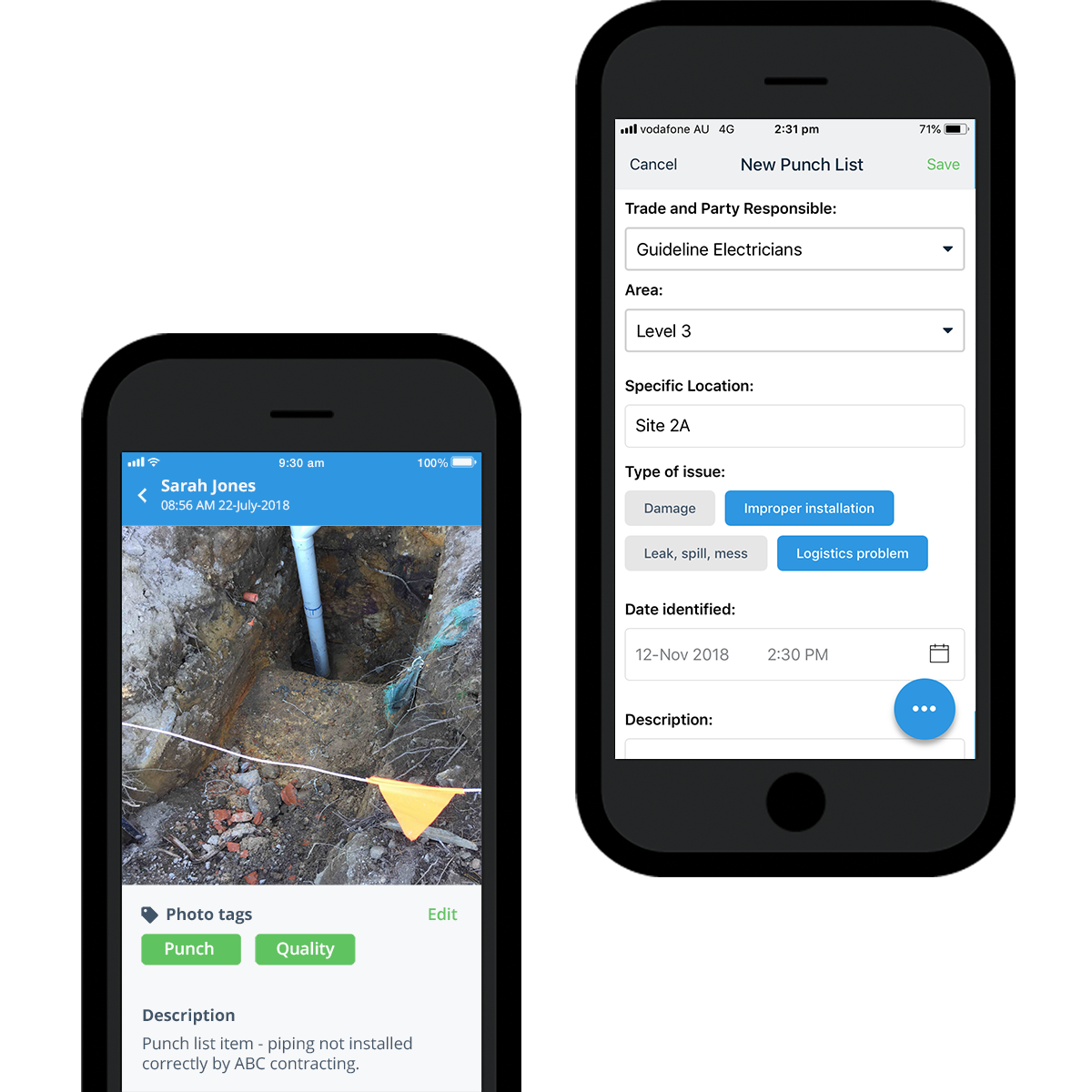
Once captured, the punch lists can then be easily managed on mobile, tablet or computer - where they can be sent to other parties for comment or signoff, and kept securely stored for safe record keeping.
You can also often get some interesting analytics and analysis from using a punch list app or software - which aggregated all of the information being captured to construct insights about the number of defects and punch list items in the case of the subcontractor - or the number of punch list items per subcontractor for the contractor, so they can understand performance over time and work with consistently good and collaborative parties.
Across tens or hundreds of projects, punch list management can get messy quickly, and it pays to manage them in an organised fashion.
I hope this article has helped to explain what a punch list is - as well as how you can complete and manage them for your company and projects.
Punch lists are a powerful tool in the industries, and they will continue to smooth communication and collaboration between parties for many years to come.
